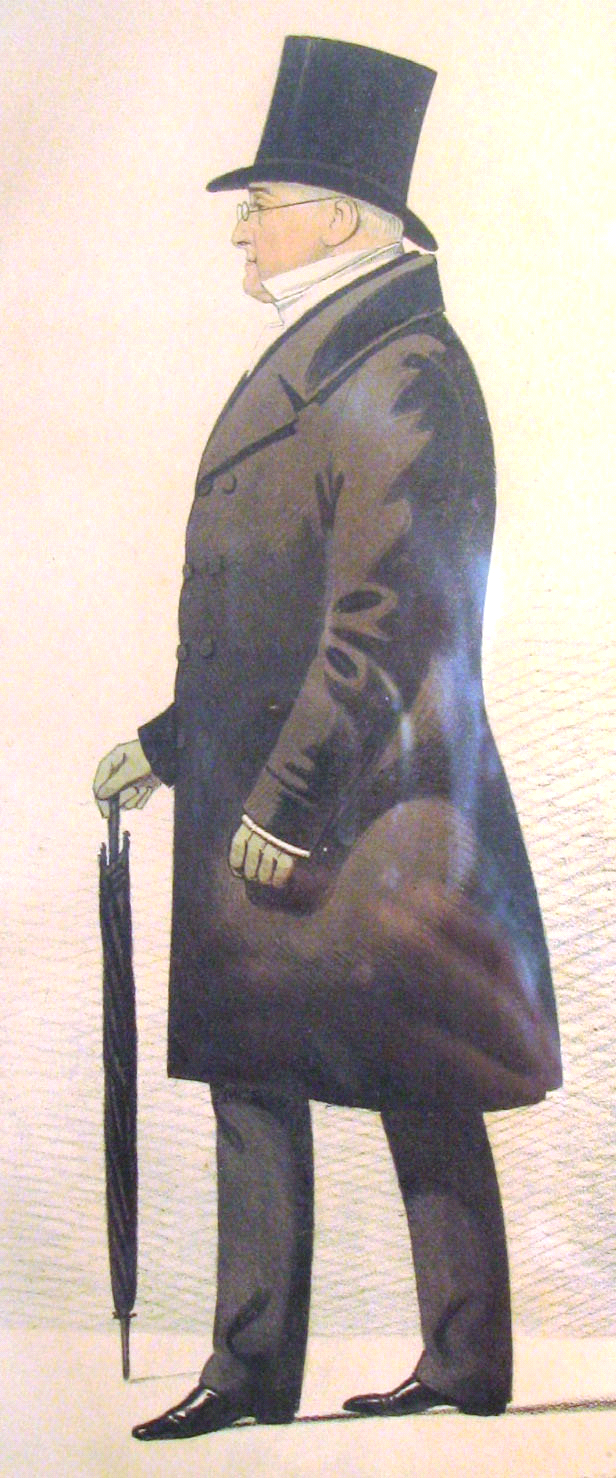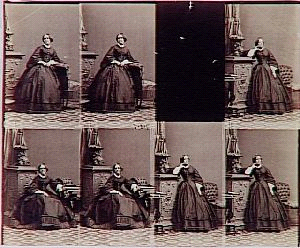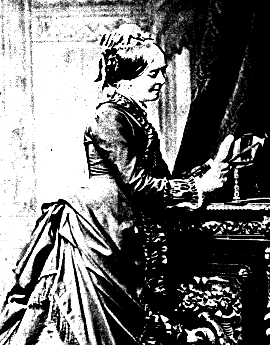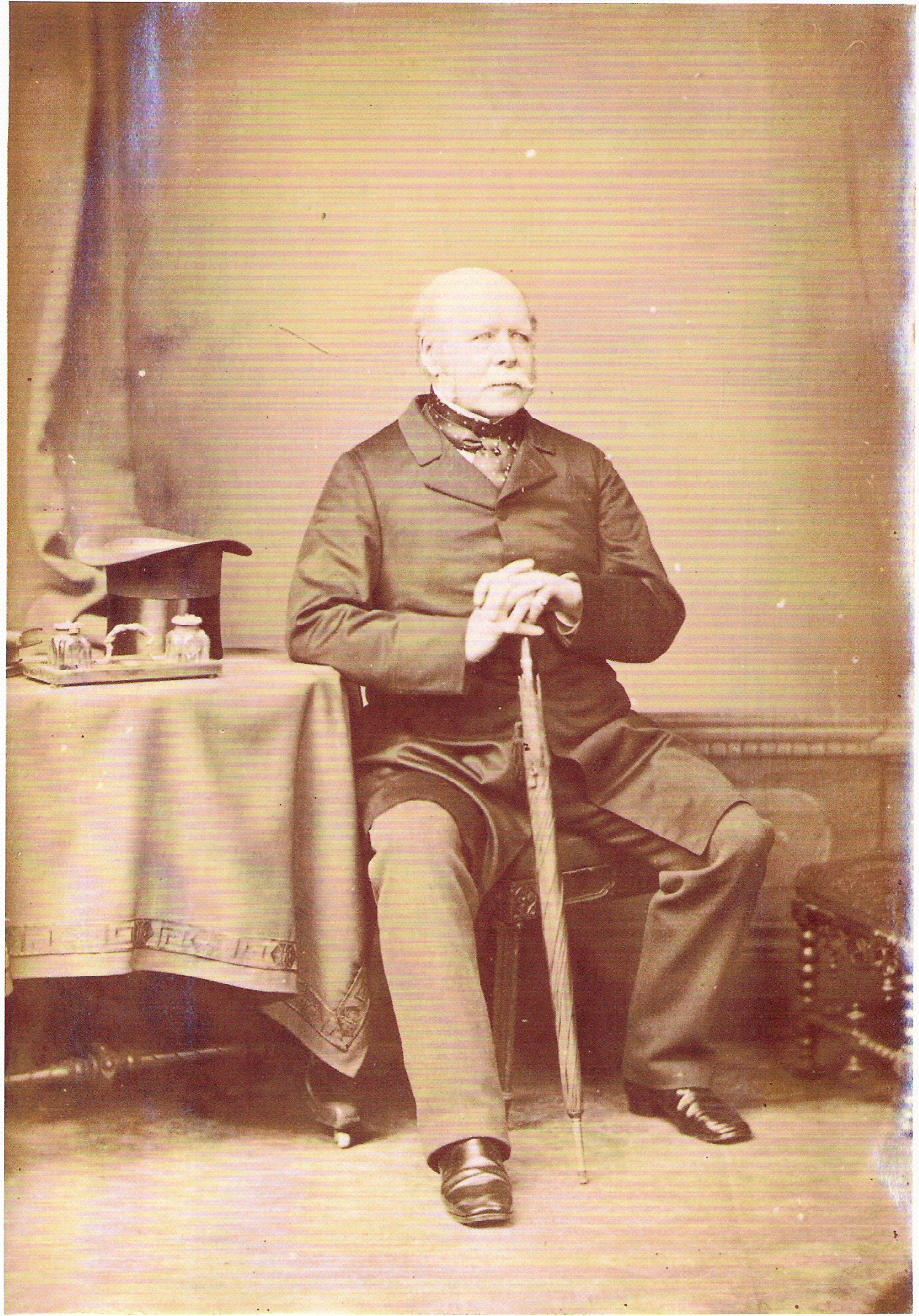Navigation: Hankeys of Churton > John Hankey > Robert Hankey > Robert Hanky > Thomas Hankey > Henry Hankey > Thomas Hankey > John Hankey > John Peter Hankey >
General Henry Aitcheson Hankey (1805-1886)

General Henry Hankey Lady Emily Hankey
Second surviving son of John Peter Hankey of Finchley; Henry Aitcheson Hankey was born on 6 Oct 1805 and baptised on 6 Nov at St Dunstan in the East (Aitcheson being the name of his maternal grandmother).
Henry was only two when his father died, and he was brought up by his mother Isabella. In 1823, at the age of eighteen, he joined the Kings Dragoon Guards as a cornet. His regiment was stationed in England and Ireland for most of his military career, and was several times called upon to put down riots and supervise parliamentary elections ‘in aid of the civil power.’
It would be intriguing to know exactly what led to the marriages of our various ancestors and how they first met. Sometimes one can deduce that, since both fathers were clergymen or bankers, the initial contact between the two families was of a professional nature, and every so often there is a more concrete clue like this one. On 4 February 1807, Abraham Wildey Robarts, MP, of Hill Street and Roehampton, (who was a partner of the bankers Robarts, Curtis & Co., later Robarts Lubbock & Co. see DNB) attended a meeting of the Committee of Managers of the London Institution for the Advancement of Literature and the Diffusion of Useful Knowledge. Also on that committee was John Peter Hankey, and thirty-two years later Abraham Wildey’s daughter Caroline Maria Robarts would marry John Peter Hankey’s youngest son Henry Aitcheson Hankey.
Henry Hankey and Caroline Robarts were married on 29 Sep 1839 at St George’s, Hanover Square, and they had two daughters, Cecile and Alice. Caroline died in childbirth on 15 Apr 1844 at Canterbury and was buried at Kensal Green. It was to be eight years before Henry married again.
In 1844 Henry Aitcheson Hankey took command of the King’s Dragoon Guards, and four years later he supervised its move to Ireland. The Adjutant Generals Office soon ‘received a very favourable report of the manner in which the 3 Divisions of the 1st Dragoon Guards were recently disembarked at Dublin,’ and Lieutenant-Colonel Hankey was told of ‘the satisfaction the Lieut. General has derived from the perusal of a Report so creditable to the discipline of the Regiment under his command.’ In the archives of the King’s Dragoon Guards, there is a diary that Henry Aitcheson Hankey kept from 1823 to 1851. In it he lists all the officers and men who joined the regiment between those dates, with their age, height and trade. Also listed are the horses that were bought when the regiment went to Canada in 1838. The regimental curator calls the diary ‘an absolutely priceless piece of regimental history.’ The regiment was still in Dublin in 1852 when Henry Aitcheson Hankey handed it over to his successor. This was the year of his second marriage, in London.
Henry’s new bride was Lady Emily Pennefather, nee Butler (1808-1895), daughter of the first Earl of Glengall and widow of Richard Pennefather of Knockevan. The wedding took place on 30 Sep 1852 at St James’s, Piccadilly. In the mid 1870s, Lady Emily Hankey of Knockeeven, Clonmel and London owned 3899 acres in Tipperary.
General and Lady Emily Hankey had a town house at 1 Hyde Park Place, and later 90 Eaton Square. From about 1856 they lived at Cliff House, Sandgate (where there were ten servants in 1881). Henry had at one time been in command of the soldiers at Shorncliffe.
In 1861, Cliff House faced a serious threat when the South Eastern Railway Company got a Bill through the House of Commons which would have allowed the construction of a branch line about two miles long near Folkestone Harbour. The alleged advantage was that this would shorten the eighty-three mile distance to London by just three-quarters of a mile, but the Bill drew fierce opposition from the Corporation of Folkestone on the grounds that it would destroy the lower road to Sandgate. Along with several local worthies opposed to the proposed railway, General Hankey argued that it would pass within twelve yards of his house and cut through his kitchen garden, thus rendering the house uninhabitable. Fortunately, the property of Lord Radnor was also affected, and he made sure that a Select Committee of the House of Lords threw the Bill out.
Henry was promoted to Lieutenant-General in 1864, and was appointed Colonel-in-Chief of the King’s Own Hussars from 1866 and of his own regiment 1st Dragoon Guards 1872-86. He became a full General in 1871. It was during this time that the King’s Dragoon Guards captured the Zulu King Cetewayo at the battle of Ulundi. Cetawayo had humiliated the British forces on the battlefield of Isandlwana, so this was a sweet revenge.


Lady Hankey 1861 by Eugene Disderi

General Hankey - 1861 by Eugene Disderi
On 4 Jan 1872 Lady Mount Edgecumbe wrote to her half brother William Henry Fox Talbot ‘I have just heard from Lady Emily Hankey, who has had a letter from Brooke Greville at Florence, wanting a carte de visite of you for a photographic Artist there, who wants to enlarge it, & place it alongside one of Daguerre.’

Lady Emily Hankey

General Henry Hankey
Lady Emily’s daughter Evelyn (Evie) Henrietta Pennefather was married, on 2 Mar 1869 at St George’s, Hanover Square, to Philip, Viscount Mahon, later 6th Earl Stanhope (1838-1905). The wedding breakfast was at Lady Emily Hankey’s and Disraeli was present and proposed the toast of the bride and groom.
The Hankeys had a wide circle of distinguished and aristocratic friends, among whom the Empress Eugenie visited them at their home at Sandgate in 1874.
It was said that General Hankey much resembled William Alers Hankey, his first cousin once removed. Sydney Alers Hankey (1839-1920) said that when dining with the old General & Lady Emily, he sometimes almost felt as if he were a boy again, at William Alers Hankey’s house in Hyde Park Gardens.
The general was fond of fishing: ‘It was not until quite modern times that rod fishing for salmon was introduced on the Frome, but after several years of the nets ... it was attempted. The first to try the rod was the late General Hankey, who was stationed at Dorchester about 1868, and though permission was granted when he asked leave of Mr Bond of Creech Grange, the idea of catching a fish was laughed at. Beginning at Holme Bridge, he fished steadily down to a pool about 400 yards below the present Swanage railway bridge. Here he hooked a fish which from its play he imagined to be a pike, and after a minute it broke away without showing itself. Having fished the river down, he returned to the same pool and in it rose, hooked, played and landed a salmon of 28lb, a clean fresh run fish. On examination he found the tongue split and bleeding, which proved it to be the fish he had hooked already. The pool is still called Hankeys Pool ... .’
‘The General was [also] very fond of hunting, and might have often been found at the meet, his fine presence rendering him a conspicuous figure. He was essentially a fair-minded man, and in some of the local controversies, in which he has taken part, notably in resistance to innovations in the Church of England, of which he is a devoted member, he was always studiously desirous to be just to those from whom he differed. He has been an important factor in our local life, generous hearted, scrupulously just, hospitable, and manly in all his actions; a thorough type of good old English gentleman.’
General Hankey died on 24 Jun 1886 at Sandgate, leaving an estate of £104,000, and was buried nearby at Cheriton. There is a memorial window to him in Maiden Newton church, where his son in law Montagu Hankey was the rector.
Lady Emily died on 6 May 1895 at her home at Sandgate, where she had lived for nearly forty years.